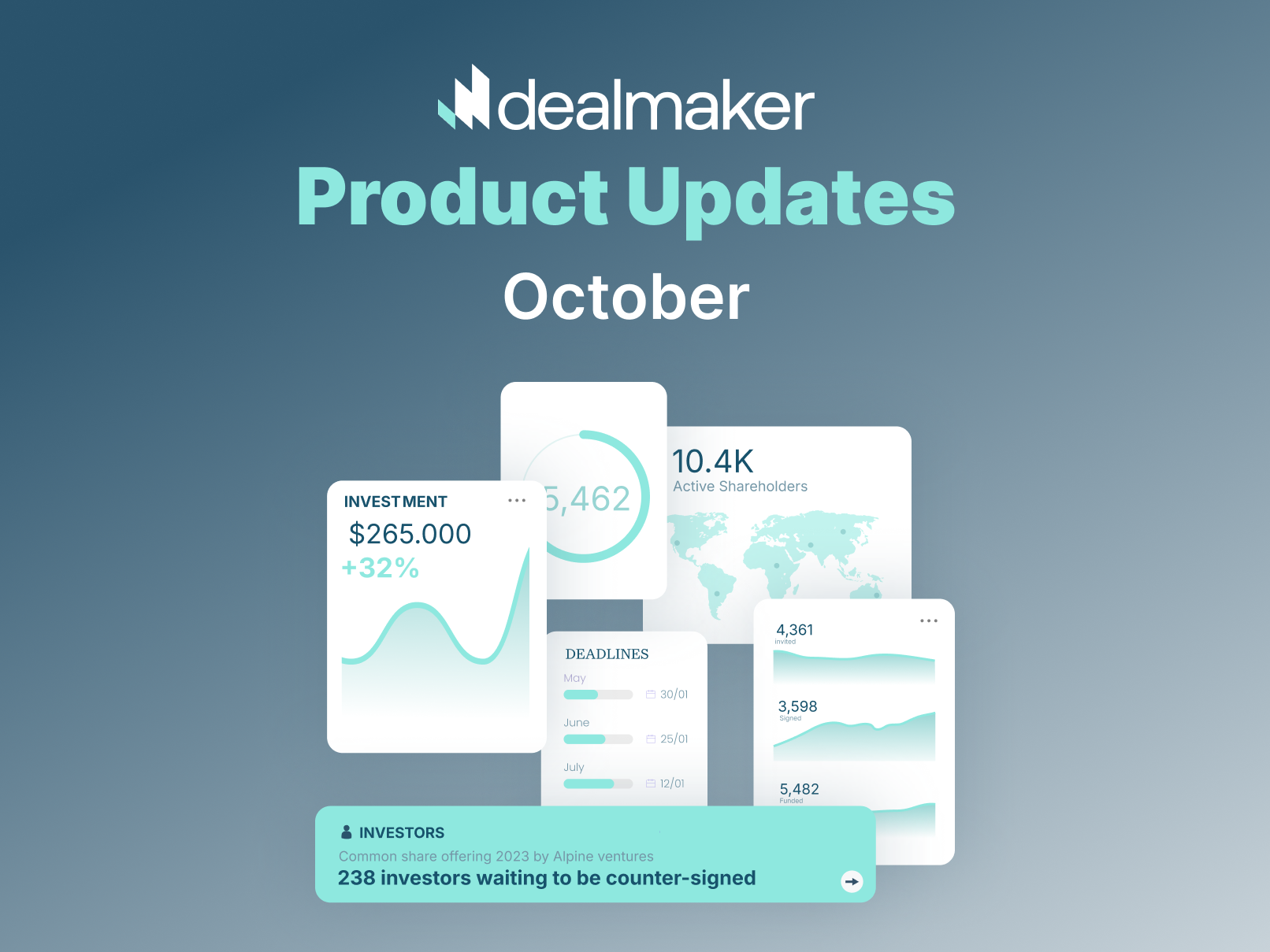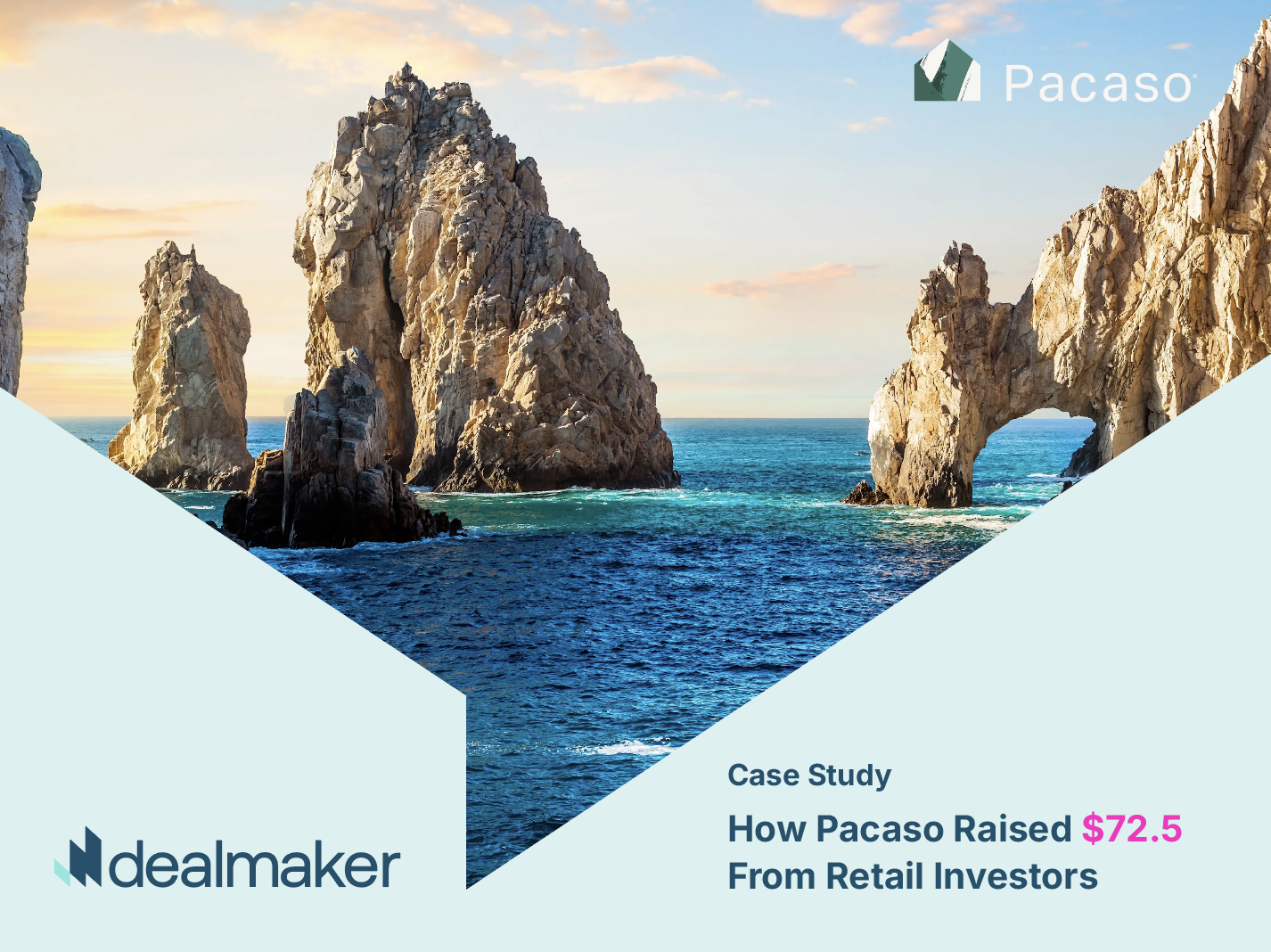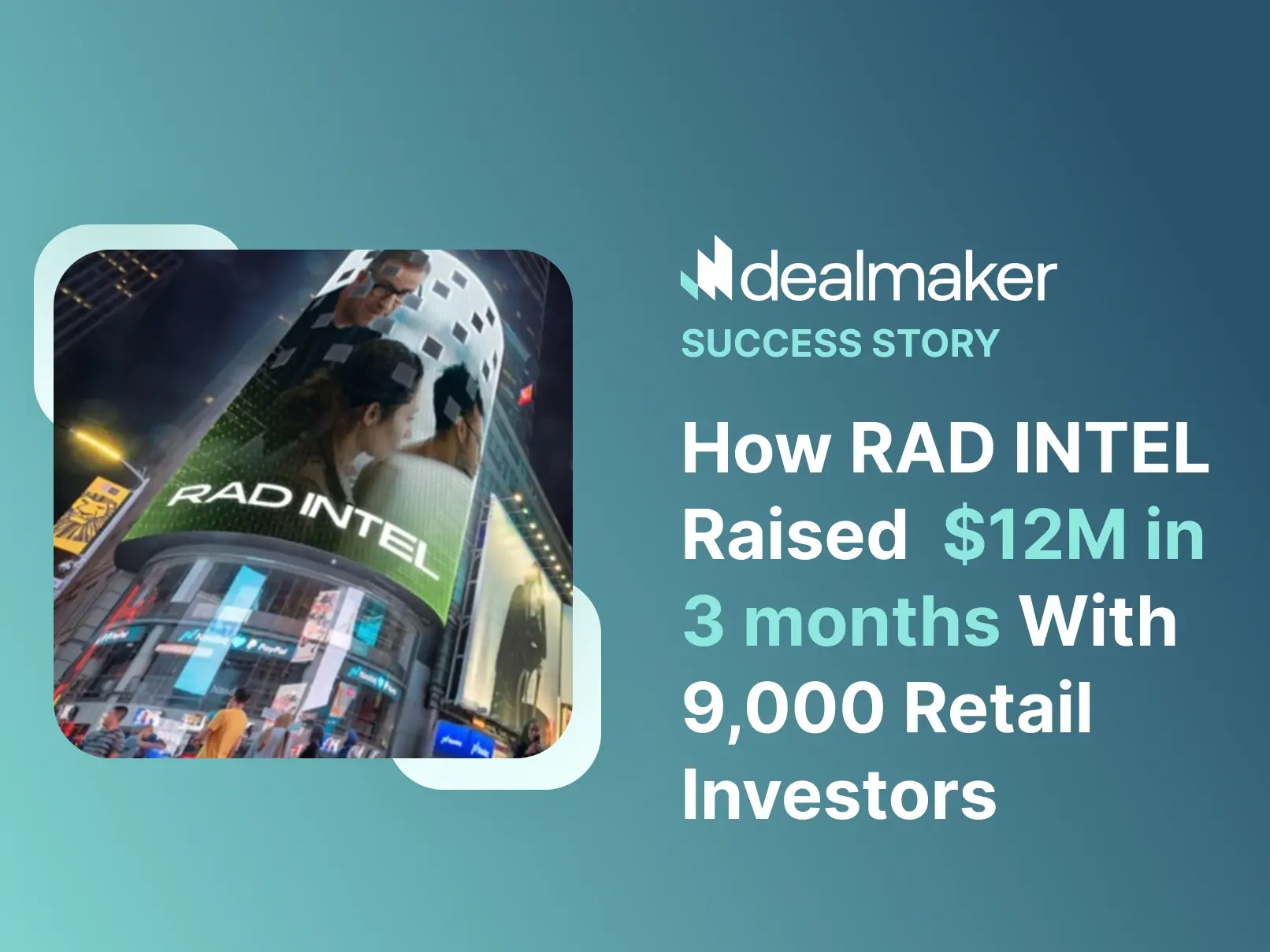Raise Capital
July 31, 2025
Turning Investors to Champions: Brand Perks and Successful Engagement
Turn Your Customers Into Champions: A Founder's Guide to Building Investor Communities
The traditional boundaries between customer and investor are dissolving, and as a founder, this presents an unprecedented opportunity. When your loyal customers become equity holders, they transform from passive consumers into active champions with genuine skin in the game.
This isn't just another fundraising strategy, it's a fundamental shift in how you can build sustainable competitive advantages through community ownership.
The psychology is powerful: customers who invest their capital become emotionally invested in your success, leading to increased loyalty, authentic advocacy, and dramatically higher lifetime value.
But here's what you need to know: successfully converting customers into investors requires more than just launching an equity crowdfunding campaign. You'll need sophisticated reward structures, seamless technology integration, and careful legal compliance.
Master this approach, and you'll unlock a self-reinforcing ecosystem where your best customers become your most valuable stakeholders, creating organic growth that traditional marketing simply cannot replicate.
The Psychology of Customer-Investors
What happens when a loyal customer takes the ultimate step and invests their own capital into your brand?
The relationship transforms from a simple transaction into a powerful partnership. This fusion of customer and investor creates a unique psychological bond that gives you a formidable competitive advantage.

By turning consumers into owners, you unlock deeper loyalty, supercharge your marketing efforts, and create a resilient, self-reinforcing growth ecosystem.
From Community to Capital: A Proven Strategy
Look at what Hylete did. This athletic apparel brand built its foundation on deep, authentic relationships with its fitness-focused audience, creating a community of dedicated followers long before asking for investment.
When the time came to seek capital for expansion, Hylete turned to this loyal base, and the results were profound. The company successfully raised an impressive $12 million in an equity funding round.
Proof that by prioritizing community and shared values, you can mobilize your customer base into a powerful collective of investors ready to fuel your future.
The Power of Emotional Ownership
When your customer becomes an investor, their connection to your brand deepens profoundly due to emotional ownership, the feeling of having a personal stake in your company's journey that goes far beyond simply owning your products.
This concept is closely related to the well-documented IKEA effect, which states that we place a disproportionately high value on things we have invested our own labor in creating.
By contributing capital (which is a significant form of personal effort and trust), your customer-investors feel as though they are actively co-building your brand. They move from being passive consumers to committed insiders, and their personal identity becomes intertwined with your company's success.
Word-of-Mouth Amplification
This deep sense of ownership naturally fuels one of the most powerful marketing forces available: word-of-mouth. As Investopedia defines it, word-of-mouth marketing occurs when a customer's interest in a product is reflected in their daily dialogues, and it can be encouraged through activities that create publicity.
For your customer-investors, their financial stake creates all the publicity they need. Their advocacy is amplified for two key reasons: passion and credibility.
Just as a passionate donor becomes a natural evangelist in the nonprofit world, a customer who has invested in your brand becomes its most trusted champion.
Their recommendations aren't just suggestions, they're passionate endorsements backed by personal and financial conviction, making their advocacy incredibly persuasive and effective, as highlighted in strategies for nonprofit fundraising and marketing.

Lifetime Value (LTV) Multiplication
Perhaps the most significant business impact you'll see is the dramatic increase in Customer Lifetime Value (LTV). When a customer invests, their relationship with your brand evolves from transactional to deeply relational and long-term.
Research published in the Harvard Business Review shows that while satisfied customers are valuable, customers who form an emotional connection with a brand are in a class of their own.
Turning a customer into an investor is one of the most powerful ways to forge that emotional bond. This creates a self-reinforcing loop of loyalty where their future purchasing decisions also serve to reaffirm their initial investment decision, leading to higher repeat purchases, greater engagement with new products, and unwavering brand loyalty.
Designing Irresistible Investor Rewards
Once your customer base is engaged, your next step is turning interest into action with an investment opportunity that feels personal and rewarding.
Financial returns may be the foundation, but the most successful campaigns go beyond numbers. They offer perks that strengthen the relationship between your brand and its new investor-advocates.
These rewards should make investors feel like true insiders, offering value that goes deeper than a line on a cap table. Here are three reward strategies that consistently drive momentum and loyalty.
Tiered Discount Structures
Offering lifetime product discounts tied to investment levels is one of the simplest ways to deliver immediate value. It creates a direct incentive for customers to invest and rewards them every time they make a purchase.
When structured in tiers, these perks do more than thank investors, they encourage them to level up. As outlined in this guide on setting effective reward tiers, a well-designed ladder of perks can significantly increase your average raise per investor.
A common approach is offering a 15 percent discount at a lower tier, with 25 or 30 percent unlocked at higher thresholds. This strategy helps convert small investors into bigger ones while keeping them engaged for the long haul.
Mode Mobile shows exactly how powerful this can be. Using DealMaker's flexible platform, they rolled out a bonus share system designed to reward larger commitments and accelerate funding. The results? They hit their $5 million Regulation CF cap in just over five months.
Their tiered approach made it easy for investors to see the value of scaling up:
- 15% bonus shares for investments of $4,950 or more
- 20% bonus shares for investments of $9,950 or more
- 50% bonus shares for investments of $24,950 or more
- 80% bonus shares for investments of $49,950 or more
- 120% bonus shares for investments of $99,500 or more
This reward structure increased average check size and gave investors a clear reason to stretch their contributions. By creating a system where value grows with investment, Mode Mobile tapped into the psychology of ownership and urgency.
Exclusive Access and VIP Experiences
Exclusivity creates emotional value that financial perks cannot match. Offering early access to new products, limited edition drops, or behind-the-scenes experiences makes investors feel like part of your inner circle.

These kinds of crowdfunding perks have proven effective in campaigns that aim to turn investors into brand ambassadors. Think early product delivery, beta features, or first-in-line status for new releases.
Pair that with private Q&A sessions, invite-only events, or even a direct thank-you from you as the founder, and you create an emotional connection that elevates your investors from passive participants to committed champions.
Co-creation Opportunities
The most meaningful way to reward investors is inviting them into your creative process. When you empower them to shape future products or features, they become true partners in your company's growth.
This approach taps into value co-creation, a strategy that delivers long-term benefits for both your business and its supporters. As shown in this study on user-led innovation, co-creation not only increases loyalty but also results in better business decisions by grounding development in real user needs.
Whether it's product naming contests, feature prioritization polls, or feedback communities, giving your investors a seat at the table fosters buy-in that goes beyond capital.
The Oakland Ballers and Death & Co both nailed this strategy. The Ballers partnered with Fan Controlled Sports, inviting fans to help shape real-time game experiences through their Control app, everything from voting on jersey designs to influencing starting lineups and even selecting pitches during fan-controlled games.
Death & Co took a different approach, offering their highest-tier investors the ultimate personalization: creating and naming a drink to be featured at a Death & Co location of their choice. This transformed investors into active collaborators in the brand's creative process while encouraging larger investments and emotional ownership.
These investor-named cocktails become conversation starters, social media content, and personal bragging rights, turning each high-tier investor into a walking advertisement for both their personalized drink and the Death & Co brand.
Legal Considerations for Investor Benefits
As a founder, offering perks can be a powerful way to turn investors into loyal customers, but you must tread carefully. The wrong incentive structure can blur the lines between a compliant crowdfunding campaign and an unregistered investment contract.
Tax obligations, valuation rules, and international complexities all come into play once you add perks to a securities offering.
Understanding these legal considerations is essential to avoid penalties, protect your investors, and maintain momentum in your raise.
Securities Law Compliance: Drawing the Line Between Perk and Promise
While perks offered during equity crowdfunding campaigns aren't regulated as heavily as securities themselves, they can create legal risk if positioned incorrectly.

You need to avoid crossing into what the SEC may define as an "investment contract," which can happen if non-monetary perks are presented in a way that leads investors to expect a profit or guaranteed benefit beyond equity.
Under the Howey Test, a transaction is considered an investment contract if it involves an investment of money in a common enterprise with the expectation of profits derived from the efforts of others. Courts have interpreted this broadly, and regulators often look at intent, messaging, and how benefits are framed.
If perks start to resemble future economic rights such as revenue-sharing or guaranteed customer privileges tied to financial outcomes, they can trigger regulatory scrutiny and potentially invalidate your exemption.
Your safest route is treating perks as experiential or product-based bonuses that have no bearing on the financial returns of the investment. Avoid using language that implies "special access to profits" or "guaranteed value" beyond the equity itself. Always consult legal counsel when designing perks to ensure they support, rather than jeopardize, your offering.
Perk Valuation and Taxation
Investor perks may feel like harmless thank-yous, but the IRS sees them differently. Any benefit with a quantifiable fair market value may be considered taxable income to the recipient, even if it's tied to an investment rather than a sale.
The IRS guidance on crowdfunding makes clear that if a person receives anything of value in exchange for money, even through a funding platform, it may be treated as income.
For you as a founder, this means investor perks need to be valued accurately and reported if they exceed certain thresholds. If an investor receives more than $600 in perks during a tax year, you may be required to issue a Form 1099-MISC. This triggers reporting obligations and tax liabilities for the investor, who must include the value as ordinary income.
For example, a $700 limited-edition product sent to a major backer would likely be taxed as income rather than treated as a nontaxable gift. That $700 could also affect the investor's cost basis in the securities they purchase. If the perk is bundled with their share purchase, it may need to be factored into the total purchase price, which could influence how capital gains are calculated when they eventually sell their shares.
Some companies choose to offer difficult-to-value perks like VIP access or co-creation opportunities because they're harder to quantify and less likely to trigger clear tax obligations. But the gray area doesn't eliminate risk. When in doubt, consult a tax advisor to evaluate whether your perks need to be reported and how to communicate this transparently to investors.
International Investors: Cross-Border Complexity
Equity crowdfunding has opened the door to a global investor base, but welcoming international backers introduces additional regulatory complexity.
If you're accepting foreign investments through Reg CF or Reg A offerings, you need to understand both U.S. requirements and the tax implications in the investor's home country.
As Colonial Stock Transfer notes, foreign companies can participate in U.S. crowdfunding offerings, but they must satisfy domestic representation, anti-money laundering, and financial disclosure rules. These same rules apply when you accept funds from a non-U.S. investor.
For example, you must ensure your KYC and AML processes are up to standard and comply with OFAC and other sanctions lists. Platforms like DealMaker help automate this, but the responsibility ultimately sits with you.
International perks can create unexpected problems. Shipping physical perks across borders could incur customs duties or local tax obligations for the recipient. Some countries may treat investor perks as taxable benefits under their own laws, while others may restrict participation in foreign offerings altogether.

If international participation is core to your campaign strategy, work with legal counsel experienced in cross-border securities and taxation. Design your perk structure with global scalability in mind, especially if you're offering merchandise, discounts, or event access.
Navigating the Line: Strategic Design with Legal Guardrails
The most effective investor perks are experiential, value-driven, and legally compliant. That means:
- Avoiding promises that resemble profit guarantees
- Valuing perks at their fair market price and tracking fulfillment
- Issuing Form 1099-MISC where required
- Minimizing taxable events for international backers
- Consulting tax and legal experts early in your campaign design
Investor perks can turn passive capital into an active, loyal community. But they're not free of consequence.
The founders who win long-term are those who integrate compliance into their creativity, creating rewards that drive engagement while staying safely within regulatory guardrails.
Measuring ROI on Investor Perks
When your investors become customers, the value extends far beyond the initial capital raise. You need to track specific metrics to quantify this dual relationship and optimize your investor experience programs.
Here's how to measure the true return on investment from turning your investor community into your most valuable customer segment.
Customer Acquisition Cost Reduction
Your investor community represents one of the most cost-effective customer acquisition channels available. Unlike traditional marketing spend, customer acquisition cost (CAC) from investor-customers often approaches zero since the relationship already exists.
The most successful companies see investor CAC rates 60-80% lower than traditional acquisition channels. This happens because investors already possess high brand awareness and trust, two critical factors that significantly reduce acquisition costs.
Additionally, investors often require minimal convincing since they're already financially committed to your success.
Track this metric by segment to identify which investor groups convert most efficiently. Early-stage investors, for instance, often show higher conversion rates due to deeper engagement with your company's mission and progress.
Investor Retention Metrics
Traditional customer retention takes on new meaning when applied to investor-customers. These individuals demonstrate significantly higher retention rates because their financial stake creates inherent loyalty beyond typical customer relationships.
Monitor these key investor retention indicators:
- Repeat purchase frequency: How often investor-customers make additional purchases compared to regular customers
- Churn resistance: Investor-customers typically show 40-60% lower churn rates during economic downturns
- Engagement depth: Track participation in investor-exclusive events, community forums, and product feedback sessions
Companies with strong investor-customer programs report retention rates exceeding 85% in this segment, compared to industry averages of 65-75% for traditional customers.
Social Media Amplification Tracking
Your investor-customers often become your most powerful brand ambassadors, generating authentic word-of-mouth marketing that money can't buy. Amplification metrics help quantify this organic reach and influence.
Key amplification metrics to monitor include:
- Share rate: Investor-customers typically share content at 3-5x higher rates than regular customers
- Reach multiplication: Each investor share reaches an average of 150-300 people in their professional networks
- Engagement quality: Comments and interactions from investor shares show higher intent and conversion potential
- Influencer impact: Track when investor-customers have significant social followings or industry influence
Create investor-specific content designed for sharing. Product updates, milestone announcements, and behind-the-scenes content perform exceptionally well with investor-customers and generate high amplification rates.

Long-term Brand Loyalty Impact
The intersection of financial investment and customer loyalty creates uniquely strong brand relationships. Brand loyalty measurement for investor-customers requires specialized metrics that capture both financial and emotional connections.
Long-term loyalty indicators specific to investor-customers include:
- Investment-to-purchase correlation: Track how customer spending correlates with investment size and timing
- Advocacy strength: Measure Net Promoter Scores (NPS) among investor-customers, which typically exceed regular customer scores by 20-40 points
- Cross-relationship durability: Monitor how customer behavior changes during subsequent funding rounds or exits
- Premium tolerance: Investor-customers often accept higher prices due to their financial stake in company success
Research shows that loyal customers contribute significantly higher lifetime value, and investor-customers amplify this effect. Their financial investment creates a unique form of loyalty that persists even through product changes or market challenges.
Implement cohort analysis to track investor-customer behavior over time. Compare metrics between different investment rounds, investor segments, and product launches to identify patterns and optimization opportunities. The goal isn't just raising capital, it's building a community of financially invested customers who drive sustainable, long-term growth.
Platform-Specific Perks: The Technology Behind Investor Rewards
The effectiveness of your investor perks isn't just about what you offer, it's about how seamlessly you can deliver them.
While other platforms often rely on third-party integrations or manual fulfillment processes, the sophistication of your perks engine can make or break the investor experience and, ultimately, your campaign's success.
The Integration Challenge
Most capital raising platforms treat perks as an afterthought, requiring companies to manage rewards through separate systems, spreadsheets, or external vendors.
This fragmented approach creates several critical problems that you need to avoid:
- Delayed fulfillment leads to frustrated investors when manual data entry creates room for error and delay
- Manual integration between systems prevents orders from flowing without intervention
- Manual processes become increasingly error-prone as you take on more customers and orders
The result? Investor perks become a compliance checkbox rather than a strategic tool for building lasting relationships.
The fulfillment process becomes complex, messy, and time-consuming, while you spend valuable time managing logistics instead of focusing on what matters most: growing your business and nurturing your investor community.
DealMaker's Integrated Perks Engine
DealMaker's approach fundamentally differs through its native perks engine, built directly into the capital raising infrastructure. This integration eliminates the friction that plagues other platforms by automating the entire reward lifecycle from selection to fulfillment.
Integration platforms act as a central hub that facilitates communication between different components of an organization's technology ecosystem, enabling businesses to automate workflows, improve data accuracy, and streamline operations.
The platform's flexibility allows you to create sophisticated perk strategies that other platforms simply can't support.
Integration platforms provide the flexibility to connect a wide range of applications and services, both on-premises and in the cloud, allowing businesses to quickly adapt to changing market conditions and incorporate new technologies as they emerge.
You can offer everything from digital downloads and exclusive content access to physical products and experiential rewards, all managed within a single, unified system.
Advanced Personalization Capabilities
Where DealMaker's perks engine truly excels is in its ability to deliver personalized investor experiences at scale. Integration platforms streamline processes, reducing the time needed to connect new tools or data sources, so businesses can see results sooner.
The system supports complex perk combinations and upgrade paths, allowing investors to accumulate benefits across multiple campaigns from the same company, creating a loyalty program effect that other platforms can't replicate.
The ability to keep data synchronized and accessible across systems in real time ensures that every department has accurate and up-to-date information, leading to better decision-making and improved customer experiences, allowing companies to react quickly to changes and ensure all teams work with the same reliable information.
Compliance and Scalability
DealMaker's integrated approach ensures that all perk offerings remain fully compliant with securities regulations while scaling effortlessly as your campaigns grow.
Integration platforms provide all the necessary control and governance to ensure that data is being exchanged securely and in compliance with relevant regulations and policies, reducing the risk of costly SLA chargebacks and mandate fines.
The scalability becomes particularly valuable during high-velocity campaigns, while other platforms struggle with fulfillment backlogs and system crashes during peak periods.
When your technology seamlessly connects investment flows with reward delivery, investor perks transform from operational burden into strategic advantage.
Building Tomorrow's Customer-Investor Ecosystem
The convergence of customer loyalty and investor ownership isn't just a trend, it's a fundamental evolution in how you'll build and sustain competitive advantages in the years ahead.
Throughout this guide, we've seen how psychological principles like emotional ownership and the IKEA effect create bonds that transcend traditional customer relationships, while practical strategies like tiered rewards and co-creation opportunities turn these bonds into measurable business results.
The data is compelling: companies that successfully convert customers into investors see dramatic improvements across every key metric, from reduced acquisition costs and enhanced retention rates to amplified social media reach and increased lifetime value.
Yet success requires more than good intentions. You need sophisticated technology platforms that can seamlessly manage complex reward structures, deep understanding of securities law compliance, and systematic measurement of ROI across multiple dimensions.
As platforms like DealMaker continue to evolve their integrated capabilities, the barriers to implementing customer-investor strategies will continue to fall, making this approach accessible to companies of all sizes.
The early adopters who master these principles today will build invaluable communities of financially committed customers who fuel sustainable growth for decades to come.
In a world where customer acquisition costs continue to rise and authentic brand loyalty becomes increasingly rare, the companies that thrive will be those that transform their most passionate customers into their most invested stakeholders.

Your submission has been received. We will reach out to you via email to schedule a call.
Oops! Something went wrong while submitting the form.





.png)





.webp)
.webp)
.webp)
%20(1).webp)

.webp)